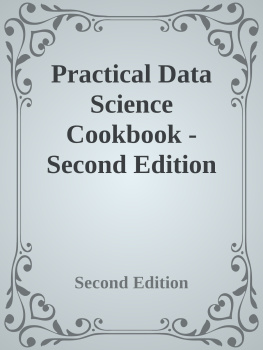Python for Data Science
Clear and Complete Guide to Data Science and Analysis with Python.
Alex Campbell
Copyright 2021 - All rights reserved by Alex Campbell .
The content contained within this book may not be reproduced, duplicated or transmitted without direct written permission from the author or the publisher.
Under no circumstances will any blame or legal responsibility be held against the publisher, or author, for any damages, reparation, or monetary loss due to the information contained within this book, either directly or indirectly.
Legal Notice:
This book is copyright protected. It is only for personal use. You cannot amend, distribute, sell, use, quote or paraphrase any part, or the content within this book, without the consent of the author or publisher.
Disclaimer Notice:
Please note the information contained within this document is for educational and entertainment purposes only. All effort has been executed to present accurate, up to date, reliable, complete information. No warranties of any kind are declared or implied. Readers acknowledge that the author is not engaging in the rendering of legal, financial, medical or professional advice. The content within this book has been derived from various sources. Please consult a licensed professional before attempting any techniques outlined in this book.
By reading this document, the reader agrees that under no circumstances is the author responsible for any losses, direct or indirect, that are incurred as a result of the use of information contained within this document, including, but not limited to, errors, omissions, or inaccuracies.
Table of Contents
Python for Data Science
BOOK 1 - Python Data Analysis: Comprehensive Guide to Data Science, Analytics and Metrics with Python.
BOOK 2 - Python for Data Science: Comprehensive Guide to Data Science with Python.
Python Data Analysis
Comprehensive Guide to Data Science, Analytics and Metrics with Python.
Alex Campbell
Introduction
People often consider data science to be one of the toughest and most challenging subjects of all time. Its name has more weight than its inner materials. The myth regarding data science makes most students stay away from it.
You would silly to believe in myths rather than verifying it all yourself. You are most likely to fall in love with the subject as it hides many surprises in its deepest folds. Data science does not require anything more than logical mathematic knowledge and little programming skills.
You might have to be aware of terms like discrete mathematics, linear algebra, calculus, vector algebra, etc. Your programming skills on Python, basic, R, and Tableau must be strong. But you can succeed! This book will help you learn the basic concepts and the various sectors in data science. Let's discover the deepest secrets of data science with Python.
Chapter 1: Basics of Data Science
Stepping into the world of data science will enlighten your path of knowledge. Pay close attention to the following chapter to understand the basics of Data Science.
What is Data Science?
If you are new to data science, then all the above sentences might seem like Hebrew. But in short, data science is nothing more complicated than scientists extracting data and information from big data and analyzing it. That data comes from multiple sources search engines, social media sites, surveys, e-commerce sites and many more places.
Every day, our access to data increases. This is mostly down to how technology and techniques in collecting it have advanced and continue to advance. These days, just about anything can be monitored, including buying patterns, customer behavior, and so on, and many companies use this to make predictions about future purchases. These decisions can help them plan better.
However, as fast as this data grows, the more unstructured it becomes and in that format, data is no good and it must be parsed to get any real information from us. That is where data science came into the picture, using machine learning and big data to interpret the data, enabling effective decision-making.
The term, 'data science' has been about for around 30 years. In 1960 it was used instead of the term 'computer science' and, around 15 years later, it was used to define the methods available for processing data; in 2001, data science became an independent discipline.
So, how does data science work? It uses tools from various disciplines to gather in the data, process it, and gain insights from that data, extracting the meaningful data and using it to make the right decisions. It's that simple. Data science comprises several fields, including programming, machine learning, analytics, statistics and data mining.
With data mining, algorithms are applied to the data set, revealing patterns used to extract meaningful data. Predictive analytics or statistical measures use the data extracted to predict what might happen in the future based on what happened previously.
Machine learning is part of the artificial intelligence family. It is used for processing huge amounts of data, quantities that humans simply couldn't even comprehend, let alone process in their entire lifetime. When predictive analytics presents a model, machine learning takes it and makes it even better. It does this by matching event likelihoods to real events that happened at a predicted time.
Analytics is about the data analyst collecting the structured data from the machine learning model and processing it using algorithms. The data is interpreted, converted and summarized into a language easily understood by the decision-making team. Data science is applied to multiple contexts. As the role of the data scientist evolves, so the field will evolve with it, encompassing data engineering, data architecture, and data administration.
Until recently, implementing data science skills into practical life was next to impossible, but in the last decade, new upcoming scientists did their best to implement the statistical knowledge into practical life.
Scientists are still working day and night to enhance the concept of data science.
Career Scope and Impact of Data Science Using Python
Coming to the first part of the topic, the career scope in data science is more than most other job scopes globally. Data science is a field of knowledge that just keeps on growing, with no boundaries. People have considered data science in Python to be the best job for the past three years, but at present, its rank has gone down to third place. Data science is a wise career choice, not just for the salary but the many benefits it offers.
Although data science is relatively new, thanks to the positivity that surrounds it, it is now in much greater demand than ever before. There are few vacancies in the data science field but these are set to increase year on year as the amount of unstructured data grows and data science jobs are created to take care of it.
A career in data science just requires a little knowledge of quantitative studies and programming skills. This is what you have to do to open career scopes in data science:
- The efficiency with quantitative streams and programming language like that of Python widens your chances of making a data science career.
- You will have to complete the basic bachelor's degree from a university in one of the quantitative streams. Learning computing languages like Python during your college days is a requirement.
Python is one of the highest-level languages of all time. It is used to code and decodes other programs without much effort in no time. The higher the level of the computing language, the easier it is for the machine to understand.
Next page

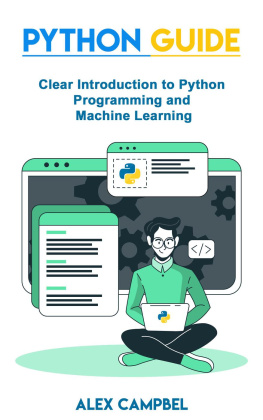

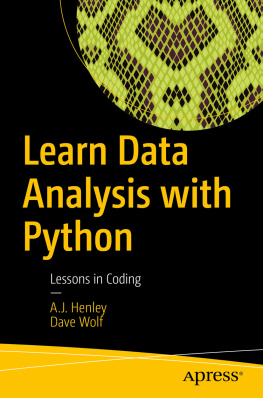
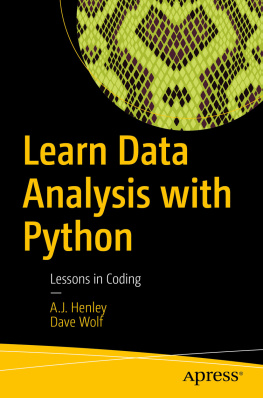
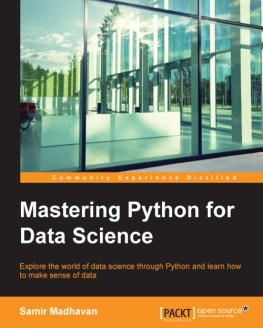
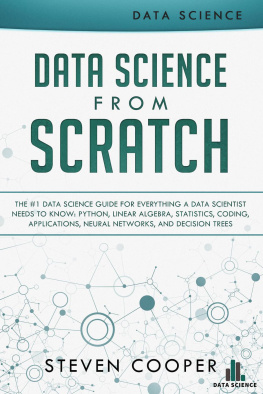
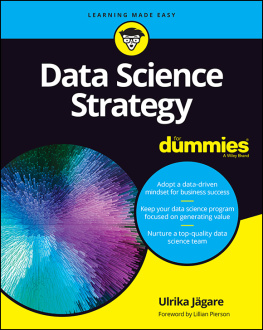
![Dmitry Zinoviev [Dmitry Zinoviev] - Data Science Essentials in Python](/uploads/posts/book/119602/thumbs/dmitry-zinoviev-dmitry-zinoviev-data-science.jpg)
